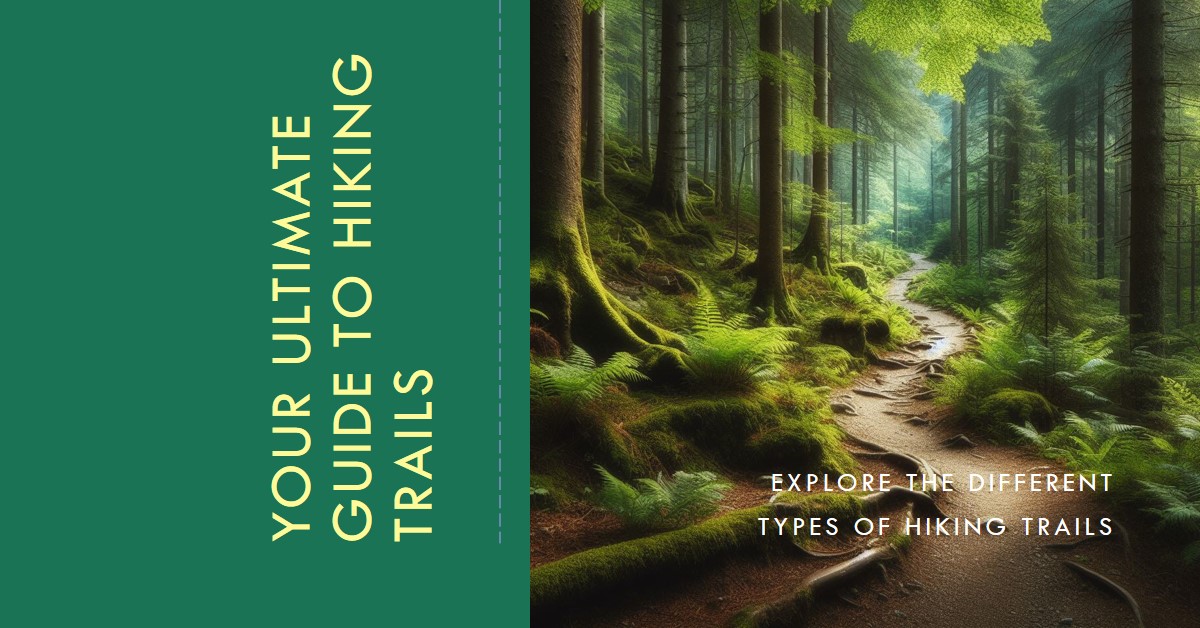In the vast world of hiking gear, a common debate resonates among outdoor enthusiasts – should you opt for a hiking stick or a trekking pole? Both present solid arguments with their own set of benefits to ensure stability and support while challenging diverse terrains.
At first sight, hiking sticks, also referred to as walking sticks, and trekking poles might appear identical. However, they possess marked differences. Hiking sticks fundamentally consist of a single pole, often composed of metal or wood, rendering balance and stability, especially on rough or irregular paths.
Conversely, trekking poles are more complex, offering a pair of collapsible poles constructed from ultra-light materials like aluminum or carbon fiber. Their main charm lies in the additional support and efficient weight distribution they offer, keeping your knees and lower body at ease during long-haul hikes. Thus, comprehending these contrasts between hiking sticks and trekking poles could play a crucial role in your gear choice for the next outdoor excursion.
Table of Contents
Why Hiking Sticks Deserve Your Consideration
Aiding your hiking expedition with a hiking stick opens doors to numerous perks. Primary among these is the enhanced balance and stability, enabling easy navigation through intricate terrains like steep inclines or slippery rocks while maintaining your equilibrium.
Furthermore, a hiking stick offers unparalleled support on uneven trails. By assisting with weight distribution, it relieves your legs and joints from undue strain. The stick acts as an extra contact point during climbing or descending, controlling your moves and minimizing risks of falls or injuries.
A notable point is the considerable reduction in joint stress that walking sticks offer. They significantly lower the impact on your knees and ankles, making long hikes a comfortable endeavor, which is particularly advantageous for those with existing joint troubles or otherwise looking to secure long-term joint health.
Perks of Swinging a Trekking Pole
While both hiking sticks and trekking poles prove to be useful hiking aids, trekking poles outshine in several areas. To begin with, trekking poles offer a workout for your upper body, involving your arms, shoulders, and core muscles while you conquer those paths. This aids in boosting overall strength and endurance.
Improved posture is another edge trekking poles have. The use of a pole evenly distributes your weight, lessening the strain on your back and joints, thus deterring fatigue and discomfort during extensive hikes. Plus, they magnify your overall hiking experience by providing stability and balance, particularly when crossing uneven or slippery landscapes.
Trekking poles also prove to be the hiker’s best friend when venturing down steep slopes by reducing stress on knees and ankles. These benefits portray trekking poles as a worthy companion for passionate hikers.
Understanding Your Needs: Hiking Stick Or Trekking Pole?
Key factors that aid in making an informed decision between a hiking stick and trekking pole include the terrain and difficulty level of your hiking trails, personal fitness, hiking goals, and safety measures.
Terrain And Difficulty Level
If your hiking paths involve challenging steep and rocky terrains, a trekking pole, with its adjustable height and sturdy build, could provide the needed stability and balance. For relatively flat or less arduous terrains, a hiking stick could suffice for added balance and support.
Personal Fitness And Hiking Goals
Considering your fitness level and hiking goals can influence your choice as well. If joint issues plague you, a trekking pole can help by reducing lower body impact. Hiking sticks, conversely, being lighter, favor those who give weightage to agility and speed.
Safety Considerations
Safety is crucial when choosing your hiking aid. Whether it’s a hiking stick or trekking pole, they should possess a proper grip, anti-shock features, and a durable construct. Weather conditions during hikes are also important to consider. A trekking pole with a built-in snow basket or rubber tip can offer better grip on slippery or snow-covered surfaces.
Summary
Deciding whether a hiking stick or a trekking pole suits your needs better depends primarily on your personal preference, hiking goals and the type of terrain you’ll face. Both tools offer additional stability and can significantly reduce the risk of injuries. By evaluating several factors, including terrain and difficulty level, your personal fitness level and hiking goals, and safety considerations, you can make an informed decision about which tool is right for you. Remember, the right tool for you is the one which makes your hiking expeditions safe, enjoyable and memorable!
The rugged battleground of outdoor equipment sees an ongoing duel between two noticeable contenders: the trusty hiking stick and the versatile trekking pole. Both are cherished tools of avid hikers, serving to provide stability and support on varied terrains. However, each camp of outdoor enthusiasts fiercely defends their tool of choice. Let’s uncover the unique properties of each and delve deeper into this passionate discourse.
Hiking sticks, or walking sticks, conventionally are single shaft devices made from an array of materials like wood or metal. They are built to offer hikers stability and balance, especially on uneven or rocky trails.
On the flip side, trekking poles are collapsible pairs made of lightweight materials like aluminum or carbon fiber. Their charm lies in providing additional support, distributing hikers’ weight, and lessening strain on knees and the lower body on long treks. Having a clear understanding of these inherent differences between a hiking stick and trekking poles can enable hikers to choose the most apt equipment for their outdoor explorations.
Navigating Terrains with Hiking Sticks
A hiking stick is more than just a trusty companion on your outdoor adventure – it can influence your hiking experience in numerous ways. Its principal advantage is the improved balance and stability that it brings. With the support of a hiking stick, tricky terrains like steep slopes or slippery rocks can be easily navigated, helping sustain your equilibrium throughout the journey.
Beyond that, a hiking stick fulfills an important role in providing support on uneven terrain. Distributing your weight, it lightens the strain on your legs and joints. On uphill climbs or downhill descents, the hiking stick, acting as an additional point of contact, controls your movements, thereby reducing the potential risk of falls or injuries.
Additionally, a hiking stick is effective in minimizing joint stress. By absorbing a significant portion of the impact on your knees and ankles, the stick makes long treks more comfortable. This function opens possibilities for those with existing joint complications or anyone striving to protect their joints over the long run.
The Upper Hand of Trekking Poles
Though hiking sticks and trekking poles are both handy for hikers, trekking poles boast several unique benefits that set them apart.
One, trekking sticks offer an agility work out that engages your arms, shoulders, and core muscles while you tackle the trails. This involvement boosts your overall strength and endurance.
Secondly, a trekking pole supports better posture. Its assistance in weight distribution reduces strain on your back and joints, helping you ward off fatigue and potential discomfort during extensive hikes.
Trekking poles also enhance the overall hiking experience by providing stability and balance, especially when traversing uneven or slippery terrain. Support when descending steep slopes, reducing the strain on your knees and ankles, is another benefit.
Deciding Between Hiking Sticks and Trekking Poles: Factors to Consider
Several crucial factors can influence your decision between a hiking stick and a trekking pole.
Terrain and Difficulty Level
The terrain type and difficulty level of your upcoming adventure should be primary considerations when deciding between a hiking stick or trekking pole. Challenging, steep, or rocky trails demand a trekking pole that gives stability and balance with its height-adjustability and robust construction. On less demanding or flat terrains, a hiking stick can substantially boost support and balance.
Personal Fitness and Hiking Goals
Reflecting upon your fitness levels and hiking ambitions can guide your gear choice. For those with knee or joint complications, a trekking pole distributing the impact on their lower body could be more suitable. In contrast, a hiking stick, being lighter, might appeal to those who prioritize agility and speed.
Safety Considerations
Safety is paramount. Whether opting for a hiking stick or a trekking pole, ensure your chosen option has a proper grip, is built to handle shocks, and is durable. Assessing the typical weather conditions you’ll face on your hikes can also aid in your decision. Trekking poles equipped with a built-in snow basket or rubber tip can offer superior traction on slippery or snowy surfaces.
Usage Techniques: Hiking Sticks & Trekking Poles
Proper use of hiking sticks or trekking poles can significantly enhance your hiking experience. Here are some tips:
Adjust your hiking stick or trekking pole’s length to match your height to ensure optimal support. The stick or pole should line up with your wrist when your arm is extended in front of you.
When hiking uphill, shorten your hiking stick or trekking pole for added support and facilitate each step. Alternatively, lengthen your stick or pole for downhill paths to help absorb impact, provide stability and control your descent while reducing pressure on your knees.
For a secure hold without straining your hand, place your hand through the strap from beneath and tighten it around your wrist. Your hand should grip the top of the stick or pole, with your arm lightly bent and elbows close to your body. This arrangement allows comfortable arm movement and maximizes the benefits of hiking sticks and trekking poles.
Final Say: Hiking Stick Vs Trekking Pole
Choosing between a hiking stick and trekking pole boils down to personal preference, hiking goals, and terrain characteristics. Each has its unique advantages, so it pays to consider your specific needs before making a choice. Whichever you pick, the golden rule holds: use them responsibly and safely, and let the trails lead you to unforgettable outdoor adventures.
The debate of the hiking stick versus the trekking pole is not a recent one. With both serving as essential companions to outdoor enthusiasts, picking between the two can become a challenging choice. In this ultimate showdown, we will unravel the subtleties that set them apart.
Often referred to as walking sticks, hiking sticks are a single pole made from a variety of materials, including wood and metal. They offer the essential service of providing stability and balance on challenging terrains, notably on rocky or uneven trails.
Trekking poles, however, take a slightly different path. Featuring a pair of collapsible poles comprised of lighter materials such as aluminum or carbon fiber, trekking poles are designed to offer increased support. They share the load across the body by distributing the weight, thereby reducing the strain during arduous hikes. By laying out the clear distinction between hiking sticks and trekking poles, hikers can choose the equipment that best matches their outdoor adventures.
Hiking Stick: More Than Just a Walking Aid
Using a hiking stick while hiking offers numerous advantages that can enhance your outdoor experience. Its principal offering lies in the additional balance and stability it provides. With a hiking stick, navigating through demanding terrain becomes more accessible, regardless of the slippery rocks or steep slopes.
Furthermore, the hiking stick extends strengthened support on uneven terrains. Aiding in weight distribution, it alleviates strain on the legs and joints. The stick acts as an additional contact point, whether you’re ascending or descending, controlling your strides and reducing the risk of injuries or falls.
The hiking stick excels in reducing joint stress as well. It alleviates a substantial part of the impact on the knees and ankles, making extended hikes more comfortable. This facet is especially beneficial for those with pre-existing joint problems or those aiming to protect their joints in the long term.
The Many Perks of Trekking Poles
While both hiking sticks and trekking poles prove to be mighty allies for hikers, trekking poles have specific advantages that set them apart from traditional hiking sticks.
For starters, using a trekking pole involves significantly more upper body engagement, orchestrating a complete workout for your arms, shoulders, and core while you trudge along the hike. This simultaneous workout helps improve overall strength and endurance.
Better posture can largely be attributed to using a trekking pole. By helping distribute your weight more evenly, it mitigates the strain on your back and joints, thus preventing fatigue and discomfort during long hikes.
Trekking poles also play a pivotal role in amplifying your overall hiking experience. They lend stability and balance, especially when maneuvering through uneven or slippery terrains. Plus, they provide necessary support during steep descents, mitigating the strain on the knees and ankles.
Choosing Between Hiking Stick and Trekking Pole: Factors to Consider
Several pivotal factors come to play when choosing between a hiking stick and a trekking pole.
Terrain and Difficulty Level
The diversity and difficulty level of your hiking trail can inform your choice between a hiking stick and a trekking pole. In scenarios involving steep and rocky terrains, a trekking pole, with its adjustable height and sturdy build, can provide stability and balance. Conversely, on flatter and less challenging terrains, a hiking stick may be adequate for supplemental support and balance.
Personal Fitness and Hiking Goals
Your personal fitness level and hiking goals are considerations when deciding between a hiking stick and a trekking pole. For those with joint issues, a trekking pole can reduce the impact on your lower body. A hiking stick, being generally lighter, could be an apt choice if you prioritize agility and speed.
Safety Considerations
Safety should always be the prime priority. Whether it’s a hiking stick or a trekking pole, they should be equipped with proper grip, anti-shock features, and built to last. The weather conditions typically encountered on your hikes should also be taken into account. Trekking poles with integrated snow baskets or rubber tips can offer improved traction on snowy or slippery surfaces.
Proper Usage of Hiking Sticks and Trekking Poles
Using a hiking stick or trekking pole correctly can amplify the hiking benefits manifold. Be sure to adjust the pole or stick length to match your height and provide optimal support.
On uphill paths, shorten your hiking stick or trekking pole. It helps provide push-off support with each step. Meanwhile, on downhill paths, lengthen your stick or pole to aid impact absorption and stability control. These adjustments can effectively reduce the pressure on your knees.
Hiking Stick or Trekking Pole: Questions Frequently Asked
What separates a hiking stick from a trekking pole?
While a hiking stick is a single-pole device targeted at stability during hikes, a trekking pole comprises a pair of poles engineered for balance and support on demanding terrain.
What benefits do hiking sticks offer to hikers?
Hiking sticks boost stability, alleviate strain on the knees and joints, improve balance on uneven terrain, and help handle weight distribution evenly during hikes.
What are the advantages of using trekking poles?
Using trekking poles can lead to improved posture, increased endurance, fatigue reduction, additional support on steep inclines and descents, and overall better hiking performance.
Do hiking sticks and trekking poles come in different sizes?
Yes, hiking sticks and trekking poles come in an array of sizes to cater to the height and preferences of different hikers.
Wrapping Up: Hiking Stick Vs Trekking Pole
The choice between a hiking stick and trekking pole boils down to personal preference, the specific type of terrain you’ll be hiking on, and your individual hiking goals. Each tool offers its unique set of advantages, and each can be beneficial depending on unique needs. Whichever tool you choose, always remember to use it sparingly and safely to fully enjoy your outdoor adventures.














